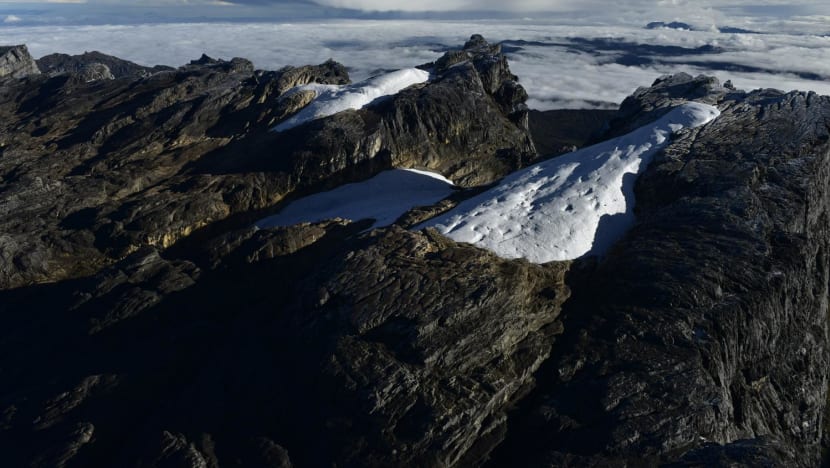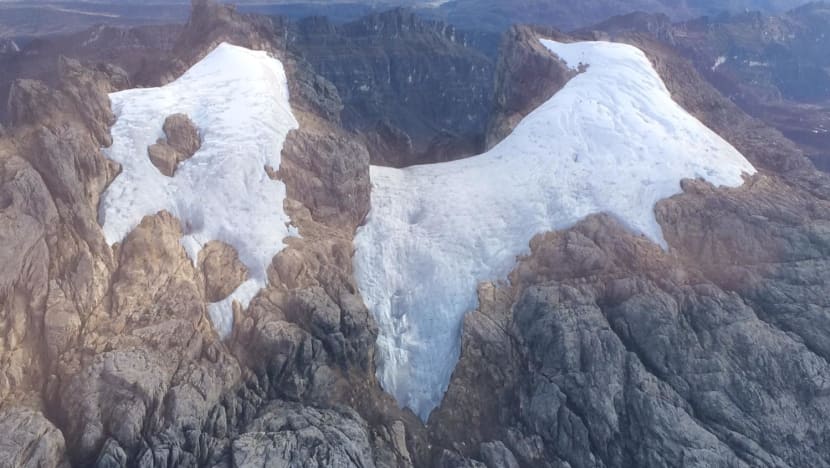Frozen no more: Indonesia’s only tropical glacier could melt away as soon as 2025

JAKARTA: Primary school students in Indonesia are taught that the country has something significant, a tropical glacier in Papua’s Jayawijaya mountains which is the only one in the region.
However, in a few years, teachers may not be able to tell their students about this geographical trivia.
After existing for about 5,000 years, the days of the glacier are numbered as research shows that it is melting and there is only a little left of it.
“The year when the glacier would be gone is between 2025 to 2027,” Mr Donaldi Permana, a climate research and development coordinator with the country’s meteorological, climatological and geophysical agency (BMKG) told CNA. He has studied the glacier extensively since 2009.
Global warming is believed to be the main reason for the melting of the glacier.
“But we only knew after the 1990s, that the (Indonesian) glacier is melting,” he said.
Jayawijaya mountain is situated in Lorentz National Park, at an elevation of 4,884m above sea level. It is the highest mountain in Indonesia and some people also refer to it as Carstensz Pyramid, since the mountain has several peaks with different names, said Mr Permana.
Other tropical glaciers in South America and Africa are also melting, Mr Permana noted.
However, as the elevation of Puncak Jaya is lower as compared to the other mountains with tropical glaciers, the one in Indonesia will disappear sooner.

THE MELTING IS ACCELERATING
Earlier studies have measured the area of the glacier, said Mr Permana.
Based on the soil maturity and vegetation distribution patterns around the glacier, it was concluded that the glacier area was about 19 sq km in 1850, he said.
Satellite imagery later showed that the glacier area was down to only 2 sq km in 2002.
By 2018, the size was only 0.46 sq km. Last year, it was 0.27 sq km. This means that the melting has accelerated over time.
To learn more about the glacier, Mr Permana and his colleagues extracted ice cores from it in 2010 by drilling 32m down to the bedrock. The ice cores were then taken to be examined.
The team also installed polyvinyl chloride (PVC) pipes to measure how much of the glacier is melting by looking at its thickness.
In 2015, they found that the pipe was exposed by 5m. “This means 1m of depth was gone per year,” Mr Permana noted.
They also noted that in 2016 when El Nino caused drier and warmer weather over Indonesia, the melting accelerated.
“From 2015 to 2016, in just one year, we lost 5m of depth,” he added.

He said that from 2016 to 2021, a further 12.5m of depth has been lost.
“Based on those figures, we can conclude that there is an acceleration (of melting),” he said. This was expected because when the glacier melts, the area around it becomes bigger, absorbing more solar radiation, added Mr Permana.
Glaciers are important because they are an indicator of the Earth’s climate and how it changes. Their melting is also a clear indicator of global warming.
From the ice cores that were extracted by Mr Permana and his colleagues, they recorded deposits of tritium, which is indicative of nuclear tests the Soviet Union and China conducted back in the 1960s.
“The tests created tritium. This composition is recorded in all glaciers in the world,” said Mr Permana.
In general, when glaciers melt, they also contribute to the rise of sea level, he added.
“Maybe this (Indonesian) glacier’s contribution is not so significant because the initial area is not so big compared to the ones in South America or Greenland … But the animals and trees around the Papua area could be impacted by the melting, although unfortunately there is no study on this yet.”
Mr Permana also revealed that there is an indigenous tribe living around the area who worships the glacier. However, there has so far been no known study about this group and how they may be affected if the glacier disappears.
“OUR PRIDE WILL DIMINISH”
Besides Mr Permana, another researcher who has also examined the glacier is Mr Yohanes Kaize.
He is the chief scientist of PT Freeport Indonesia, a gold and copper mining company. Its Grasberg mine, which holds one of the largest reserves of copper and gold in the world, is just a few kilometres away from Puncak Jaya.
On days when the weather is clear, the glacier is visible from Grasberg, Mr Kaize said.
He has visited the glacier several times in the last seven years to examine air and water quality in the area as well as the rainfall.
Mr Kaize also monitors the glacier from the air and takes pictures of it.
“The glacier area has diminished significantly. It is very sad,” said Mr Kaize.
“Previously, there were also smaller glaciers there but they are gone now.”
The melting ice will flow into the tributaries and lake near the summit and would probably impact the river there, he said.
Eventually, this could affect the Arafura sea between northern Australia and the south coast of New Guinea, he posited. But he believes that the impact may not be that significant.
“The (water) volume of the rivers or lake would probably increase but probably not so much,” he said.
He also noted that there are a few tribes living nearby, although he is unsure which one worships the glacier.
Nevertheless, as a native Papuan himself, Mr Kaize stated: “We Papuans believe that nature and people are interconnected. That is why we also call it Mother Earth.
“So they probably have local tales about the glacier. If the glacier is gone, the tale would be gone too.”
He predicted that all glaciers will disappear in Puncak Jaya by 2030.
“As a Papuan myself, the only glacier in the Oceania region, the only one in Indonesia, I can say we are proud of this. But when it is gone, our pride will also diminish,” he told CNA.
“So, now we have to save the Earth together. Even simple things like planting trees and not littering matter. Hopefully, we can still admire the glacier until the very end.”
Read this story in Bahasa Indonesia.

No comments
Share your thoughts! Tell us your name and class for a gift (: